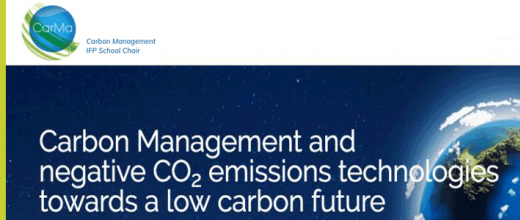Tackling climate change necessarily involves reducing greenhouse gas emissions resulting from human activities, primarily carbon dioxide and methane. The problem is global and the actions required must be implemented within the framework of a systemic approach, with scale effects that are difficult to fully understand. Nevertheless, the Paris Agreement reflects the determination of nations to correct the current trajectory while respecting the legitimate aspirations of emerging countries to raise their living standards.
In addition to reducing emissions at source, one lever available to limit climate impact is to extract CO2 from the atmosphere (i.e. negative emissions), using solutions that are environmentally-friendly, that protect biodiversity and that are both deployable and accepted by our societies. The main difficulties lie in the complexity and interdependence of the phenomena to be considered, requiring expertise and tools in a variety of fields, such as energy, land use planning and forest management, as well as human sciences. Although such expertise exists in all these fields, partial and poor solutions may emerge if there are not sufficient interactions to solve the problem in a global way.
The ambition of CarMa1, a teaching and research Chair sponsored by Total, is to explore and analyze the field of negative CO2 emissions, using a very broad approach, in order to identify which options could be deployed by 2050. In line with the principle of sustainable development, the approach adopted focuses on three solutions that may increase CO2 sequestration capacities: direct capture of CO2 in the atmosphere (DACCS), soil sequestration and biomass energy extraction combined with CO2 capture, storage and utilization (BECCS).
These topics are already being examined from a regulatory and economic perspective, including a “carbon life cycle analysis (LCA)”, in two post-doctoral research projects and one thesis. Three additional young researchers will be recruited in 2021 to work on the societal aspects of BECCS deployment and on the antagonisms and co-benefits of land allocation in the context of biomass energy use. The research areas addressed during the first two years (some in partnership2) lie within the perimeters illustrated in the diagram.
The very first results, currently being published[1] 3, present the economic analysis of a concrete case in Sweden involving the collection, transport and use of biomass, combined with the capture, transport and storage of the CO2 produced by its combustion. In this analysis, the concepts of cooperative game theory are mobilized in order to identify conditions for cooperation between different emitters connected to a common infrastructure, a pre-requisite considered essential for the large-scale deployment of this combination of technologies.
In order to raise awareness of this crucial issue for the 21st century, a website has been set up to facilitate the dissemination of the Chair’s results. The “BECCS” theme has also been included in the 2020 edition of the “Energy Transition” MOOC offered by IFP School.
Click on the picture to enlarge

concerning negative CO2 emissions approaches
1- CarMa: “Carbon Management and negative emissions technologies towards a low carbon future”, created in July 2019 in partnership with the Tuck Foundation.
2- For example with the CNRS, the University of Pau and Pays de l’Adour and INRAE.
3- The article currently submitted[1] can be accessed on City Research Online and in Les Cahiers de l’économie, published by IFPEN - IFP School (issue 135 – August 2020).
[1] E. Jagu et O. Massol. Building infrastructures for Fossil- and Bio-energy with Carbon Capture and Storage: insights from a cooperative game-theoretic perspective, 2020, submitted to Environmental and Resource Economics.
>> https://openaccess.city.ac.uk/id/eprint/25034/
Scientific contact: Jean-Pierre Deflandre








